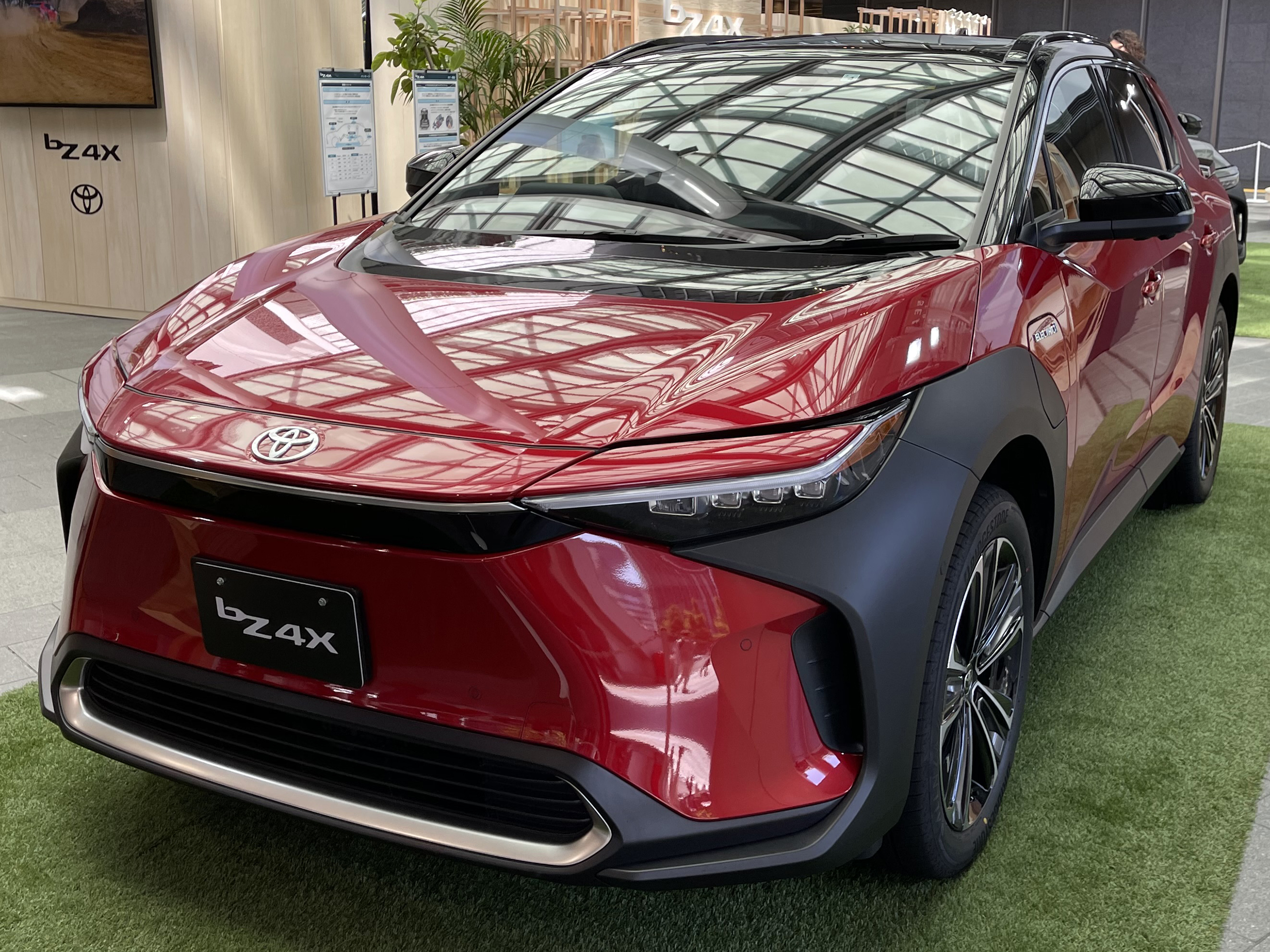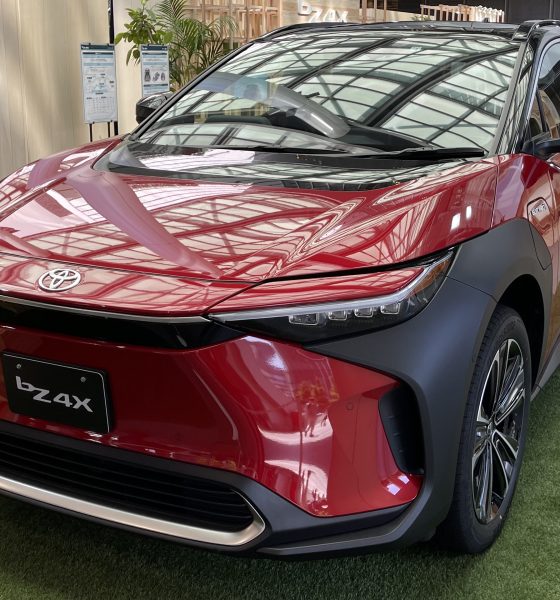

News
Toyota Australia executive: Still “too early” for electric vehicles
As Australia’s leading automaker, Toyota has sparked some debate over vehicle pollution limits in the country, with an executive suggesting that electric vehicles are not yet ready to replace all cars. The executive also noted that a full shift to EVs could leave thousands of motorists without suitable alternatives.
The comments were shared by Toyota Australia’s sales boss, Sean Hanley. While Hanley acknowledged Toyota’s strong support for the government’s fuel-efficiency standard aimed at capping vehicle emissions and promoting low-emission vehicle imports, he argued that relying solely on EVs was “simplistic.”
“It is too early. What battery electric vehicle do we have right now on sale in Australia that can tow 2.5 tonnes for 600 km? We don’t. It doesn’t exist.
“If we just move to only zero-emission vehicles, what are you going to tell the hundreds of thousands, if not millions of Australians who tow caravans, who use their cars for work, who need their cars on the land, who need their cars in the mine, who need more than a 200 or 300 km range?” Hanley said.
Hanley, however, clarified that Toyota was “not against battery electric vehicle technology.” He also noted that the carmaker would launch its own EV in Australia by the end of the year. Despite this, the executive argued that hybrid vehicles are still the more practical solution at the moment.
“We’ve spoken to the government, and I think we have represented the silent voices of hundreds of thousands of Australian consumers who use their cars for leisure, towing, and lots of other activities. I know some lobby groups have alleged we’ve tried to stop, prevent, stall electrification, but that’s not true. We’ve simply represented the market truth and the market reality,” Hanley noted.
The Toyota executive’s comments received responses from electric vehicle advocates. Electric Vehicle Council Chief Executive Behyad Jafari, for one, noted that EV technology has already been proven successful in many other countries and is gaining popularity in Australia.
“When we hear those arguments, what we need to pay close attention to is the economic interest of the car company. Some businesses haven’t spent time developing electric vehicles, and they don’t have a firm enough grasp on the issues,” Jafari said.
Greenpeace campaigner Lindsay Soutar, on the other hand, argued that Australians would not accept weaker vehicle pollution standards or delayed action anymore. Soutar noted that Toyota’s arguments for hybrid vehicles would also lock customers into fossil fuels for years to come.
“Toyota has stalled on pure electric cars, opting to promote hybrid and fuel-cell technologies that will lock customers into paying for fossil fuels for decades to come. Pushing for petrol cars in 2023, in the middle of a climate and cost-of-living crisis, is laughable, and Australians won’t be convinced,” Soutar said.
Don’t hesitate to contact us with news tips. Just send a message to simon@teslarati.com to give us a heads-up.

News
Tesla FSD fleet is nearing 7 billion total miles, including 2.5 billion city miles
As can be seen on Tesla’s official FSD webpage, vehicles equipped with the system have now navigated over 6.99 billion miles.

Tesla’s Full Self-Driving (Supervised) fleet is closing in on almost 7 billion total miles driven, as per data posted by the company on its official FSD webpage.
These figures hint at the massive scale of data fueling Tesla’s rapid FSD improvements, which have been quite notable as of late.
FSD mileage milestones
As can be seen on Tesla’s official FSD webpage, vehicles equipped with the system have now navigated over 6.99 billion miles. Tesla owner and avid FSD tester Whole Mars Catalog also shared a screenshot indicating that from the nearly 7 billion miles traveled by the FSD fleet, more than 2.5 billion miles were driven inside cities.
City miles are particularly valuable for complex urban scenarios like unprotected turns, pedestrian interactions, and traffic lights. This is also the difference-maker for FSD, as only complex solutions, such as Waymo’s self-driving taxis, operate similarly on inner-city streets. And even then, incidents such as the San Francisco blackouts have proven challenging for sensor-rich vehicles like Waymos.
Tesla’s data edge
Tesla has a number of advantages in the autonomous vehicle sector, one of which is the size of its fleet and the number of vehicles training FSD on real-world roads. Tesla’s nearly 7 billion FSD miles then allow the company to roll out updates that make its vehicles behave like they are being driven by experienced drivers, even if they are operating on their own.
So notable are Tesla’s improvements to FSD that NVIDIA Director of Robotics Jim Fan, after experiencing FSD v14, noted that the system is the first AI that passes what he described as a “Physical Turing Test.”
“Despite knowing exactly how robot learning works, I still find it magical watching the steering wheel turn by itself. First it feels surreal, next it becomes routine. Then, like the smartphone, taking it away actively hurts. This is how humanity gets rewired and glued to god-like technologies,” Fan wrote in a post on X.
News
Tesla starts showing how FSD will change lives in Europe
Local officials tested the system on narrow country roads and were impressed by FSD’s smooth, human-like driving, with some calling the service a game-changer for everyday life in areas that are far from urban centers.

Tesla has launched Europe’s first public shuttle service using Full Self-Driving (Supervised) in the rural Eifelkreis Bitburg-Prüm region of Germany, demonstrating how the technology can restore independence and mobility for people who struggle with limited transport options.
Local officials tested the system on narrow country roads and were impressed by FSD’s smooth, human-like driving, with some calling the service a game-changer for everyday life in areas that are far from urban centers.
Officials see real impact on rural residents
Arzfeld Mayor Johannes Kuhl and District Administrator Andreas Kruppert personally tested the Tesla shuttle service. This allowed them to see just how well FSD navigated winding lanes and rural roads confidently. Kruppert said, “Autonomous driving sounds like science fiction to many, but we simply see here that it works totally well in rural regions too.” Kuhl, for his part, also noted that FSD “feels like a very experienced driver.”
The pilot complements the area’s “Citizen Bus” program, which provides on-demand rides for elderly residents who can no longer drive themselves. Tesla Europe shared a video of a demonstration of the service, highlighting how FSD gives people their freedom back, even in places where public transport is not as prevalent.
What the Ministry for Economic Affairs and Transport says
Rhineland-Palatinate’s Minister Daniela Schmitt supported the project, praising the collaboration that made this “first of its kind in Europe” possible. As per the ministry, the rural rollout for the service shows FSD’s potential beyond major cities, and it delivers tangible benefits like grocery runs, doctor visits, and social connections for isolated residents.
“Reliable and flexible mobility is especially vital in rural areas. With the launch of a shuttle service using self-driving vehicles (FSD supervised) by Tesla in the Eifelkreis Bitburg-Prüm, an innovative pilot project is now getting underway that complements local community bus services. It is the first project of its kind in Europe.
“The result is a real gain for rural mobility: greater accessibility, more flexibility and tangible benefits for everyday life. A strong signal for innovation, cooperation and future-oriented mobility beyond urban centers,” the ministry wrote in a LinkedIn post.
News
Tesla China quietly posts Robotaxi-related job listing
Tesla China is currently seeking a Low Voltage Electrical Engineer to work on circuit board design for the company’s autonomous vehicles.

Tesla has posted a new job listing in Shanghai explicitly tied to its Robotaxi program, fueling speculation that the company is preparing to launch its dedicated autonomous ride-hailing service in China.
As noted in the listing, Tesla China is currently seeking a Low Voltage Electrical Engineer to work on circuit board design for the company’s autonomous vehicles.
Robotaxi-specific role
The listing, which was shared on social media platform X by industry watcher @tslaming, suggested that Tesla China is looking to fill the role urgently. The job listing itself specifically mentions that the person hired for the role will be working on the Low Voltage Hardware team, which would design the circuit boards that would serve as the nervous system of the Robotaxi.
Key tasks for the role, as indicated in the job listing, include collaboration with PCB layout, firmware, mechanical, program management, and validation teams, among other responsibilities. The role is based in Shanghai.
China Robotaxi launch
China represents a massive potential market for robotaxis, with its dense urban centers and supportive policies in select cities. Tesla has limited permission to roll out FSD in the country, though despite this, its vehicles have been hailed as among the best in the market when it comes to autonomous features. So far, at least, it appears that China supports Tesla’s FSD and Robotaxi rollout.
This was hinted at in November, when Tesla brought the Cybercab to the 8th China International Import Expo (CIIE) in Shanghai, marking the first time that the autonomous two-seater was brought to the Asia-Pacific region. The vehicle, despite not having a release date in China, received a significant amount of interest among the event’s attendees.








